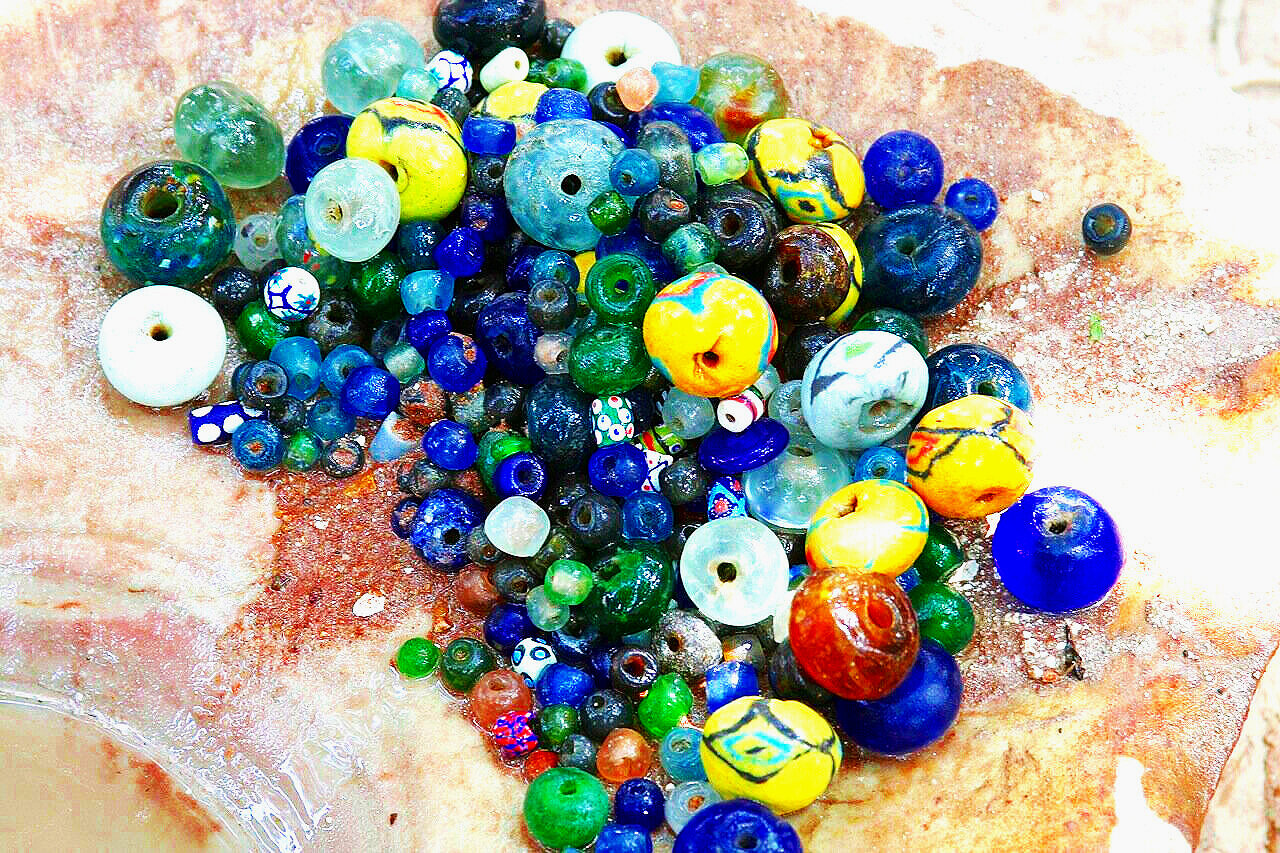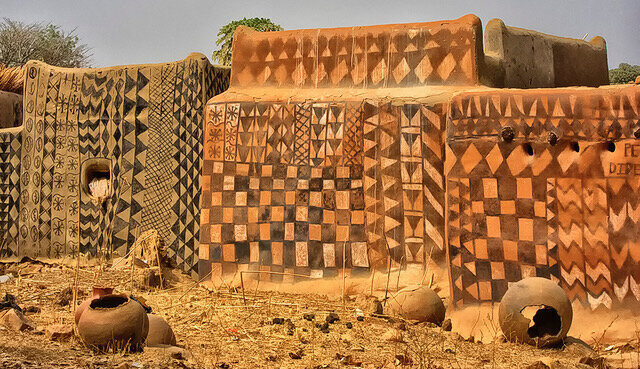
West African Kente Cloth
Journey with a quest: Bonwire, Ghana, to learn about kente cloth weaving
After the cultural immersion of the Akwasidae celebration in Kumasi, Ghana, I wanted to learn more about the exquisite kente cloth made by the Asante and Ewe people in Ghana. “Kente” means handwoven cloth in the Twi language of the Akan people, to which the Asante belong. According to legend, kente weaving started with two hunters from Bonwire, who watched a spider weave a web and were later inspired to re-create the patterns.
Since we were already in Kumasi for the Akwasidae celebration, Kofy, my Ghanian guide, suggested we visit Bonwire, a village where skilled weavers made kente, the most well-known of West African textiles. Upon entering the town, we saw men sitting on their front porches facing horizontal looms laden with pulleys, cords, heddles, and a drag stone that anchors the warp threads for tension. I couldn’t imagine they considered these looms portable.
Kente cloth weaver in Bonwire, Ghana
At the Bonwire weaving center, every inch of space was taken up with weavers facing their narrow horizontal strip looms. A spokesperson for the coop greeted us over the clacking sounds of the weavers’ shuttles, the devices that carry the thread between the warp and the weft threads. He described the weaving, patterns, and colors in the cloth as we inched our way around the perimeter of the center, skirting the weavers’ wooden looms, which they operated with their feet and hands. I easily spotted the most experienced artisans making the most intricate and densely packed designs covering the entire cloth.
Kente Weaving
Kente weaving consists of narrow strips of geometric designs in small blocks about three to four inches wide on a wooden loom. These designs and colors have specific meanings and often refer to the person who made them or to proverbs. When completed the narrow woven strips are sewn together to form a large textile that can measure eight feet by five feet, or larger. Today kente is mainly done on acrylic, silk, and cotton, with acrylic being the most popular.
Contemporary kente cloth design with adinkra symbols. Read more about symbols here.
Kente cloth as a status symbol
Kente is worn for special occasions of all sorts, including funeral commemoration services. In this case, the appropriate colors are white and black or white and blue. In the past, some types of cloth were considered more suitable for women. Kente is associated with high office, and some designs, involving extreme skill to weave, are exclusive to the Asante chief (the Asantehene). The most expensive kente pieces are called “Adwene asa,” which means “I am exhausted.” These textiles like the one the king wore at the Akwasidae are made by master weavers, chosen by the royal family.
In the Ashanti region of Ghana, kente cloth is a great status symbol, marking your wealth, and in the past, your office. It is something to be worn on important occasions and by important people. Men wear it like a toga, with one shoulder exposed. Women wrap the cloth around their bodies, usually at the waist like a skirt or at breast level, with a blouse completing the outfit. It can also be worn as a shawl around the shoulders.
Before leaving the weaving center, I purchased a vintage piece from the 1950s, a rare indigo silk kente cloth, from one of the weaver’s mothers.













